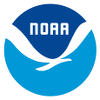Menu
Home > Research by Programs > IPEMF

Benthos Metadata
Samples were taken in triplicate at each site with a PONAR grab (area = 0.046 m^2) and washed into an elutriation device fitted with a nitex sleeve having 0.25 mm openings. Retained material was immediately preserved in a 10% buffered formalin solution containing rose Bengal stain.
Retained residue was placed in a white enamel pan and organisms were picked, counted, sorted into major benthic groups, and stored in ethanol. For some samples, the number of organisms was quite large and samples were split and the results applied to the entire sample. Prey counts were converted to areal density (#/m^2).
Up to 30 intact individuals from each major taxonomic group were measured for each sample using a digital image analysis system (Image Pro). Lengths were converted to mass using length to dry mass equations (see below). Prey densities were converted to biomass densities by multiplying the mean mass of a prey type at a given site by its respective density. For oligochaetes, all individuals were placed in a pre-weighed drying tin and dried at 60 C for 48 h to determine dry mass for each site. For samples where no whole prey were present to measure, the mean calculated prey mass across all samples was used.
| Taxa | mm to dry mass eq. | dry mass units |
| Amphipoda | W=0.133*(L^2.67) | mg |
| Sphaeridae | W=(((1.14*10^-8))*(L^3.12)) | g |
| Chironomidae larvae/pupae | W=0.0013*(L^2.69) | mg |
| Dreissenid mussels | W=0.014*(L^2.52) | g |
| Gastropoda | W=0.000053*(L^2.46) | g |
| Hirudinae | W=0.00057 | g |
| Isopoda | W=0.0036*(L^3.111) | mg |
| Hexagenia | W=0.0024*(L^2.718) | mg |
Contact information:
Steve Pothoven
NOAA/GLERL
Lake Michigan Field Station
1431 Beach St., Muskegon, MI 49441-1098
(231) 759-9035
Tomas Hook
Purdue University
Department of Forestry and Natural Resources
195 Marstellar Street
West Lafayette, IN 47907M
(765) 496-6799


